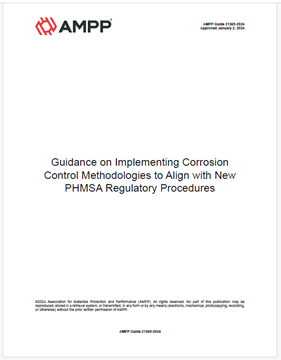Search
Products tagged with 'external corrosion control'
View as
Sort by
Display
per page
A Novel Approach to Assessing Stray Current Interference without Potential Interruption
Product Number:
51324-20452-SG
Publication Date:
2024
$40.00
AMPP Guide 21569-2024, Guidance on Implementing Corrosion Control Methodologies to Align with New PHMSA Regulatory Procedures
Product Number:
AMPP Guide 21569-2024
Publication Date:
2024
$109.00


